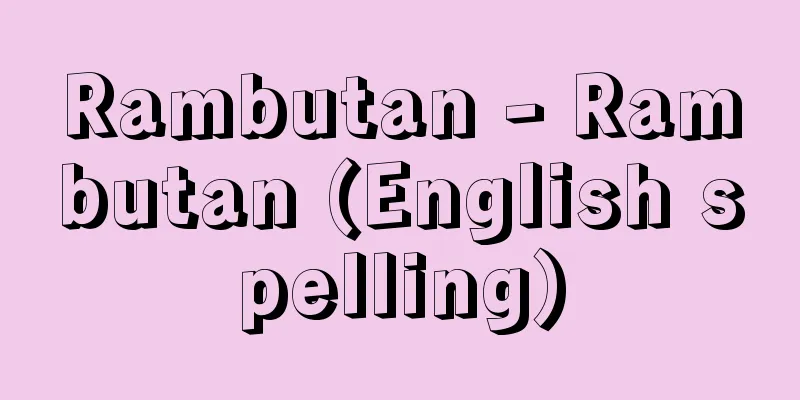Marieluise Fleisser

|
1901‐74 A German female folk dramatist and local literature scholar. Set in her birthplace of Ingolstadt (Bavaria), she wrote plays such as Purgatory (1926) and The Engineers of Ingolstadt (1929, directed by Brecht), which depict the behavior of young people who are alienated from the conservative and stubborn world around them. Her unrestricted and atrophied dialogue technique had a major influence on the dramaturgy of M. Sperl, R. Fassbinder, and F. Kretz. [Koshibe Susumu] Source: Heibonsha World Encyclopedia, 2nd Edition Information |
|
1901‐74 ドイツの女性民衆劇作家,郷土文学者。出生地インゴルシュタット(バイエルン州)を背景に,保守的で頑迷固陋な四囲の世界から疎外された若者たちの行動様式を描く戯曲《煉獄》(1926),《インゴルシュタットの工兵隊》(1929,演出ブレヒト)を書く。その伸びやかでない萎縮しきった対話技術は,M.シュペル,R.ファスビンダー,F.クレッツらの作劇術に大きな影響をあたえている。【越部 暹】 出典 株式会社平凡社世界大百科事典 第2版について 情報 |
<<: Fleischer brothers - Fleischer siblings (English spelling) Fleischer brothers
Recommend
The Third Roman Treatise
A Russian political theory from the early 16th cen...
Monetary compensation - Kinsenbaisho
The term "damages" refers to damages pai...
Hessen, B. (English spelling) HessenB
...Works such as "The History of Science fro...
Meiji Shrine Outer Garden
This green space stretches from the northwestern ...
Geki Diary - Geki Nikki
An official diary written by a gaki (advisor) duri...
MS-T5, PLANET-A - MS Stage
...ISEE3 started moving from the Lagrangian point...
Waal
…The topography that forms the backbone of the co...
anchor
…anchor is a tool used to anchor a ship in a plac...
doctrine of domicile
...the doctrine of adopting nationality as the st...
Posidonius
…Greek philosopher from Apamea, Syria. Latin name...
Overseas coal - Kaigaitan
…The 6th Coal Policy was also issued in July of t...
Electrometric titration
A general term for a method of determining the en...
Titanium white - Titanium white (English spelling)
A white pigment whose main component is titanium d...
Kogake
The main line of the Murakami Genji. Seiga family....
Hometown system
Local administrative divisions in the first half ...









